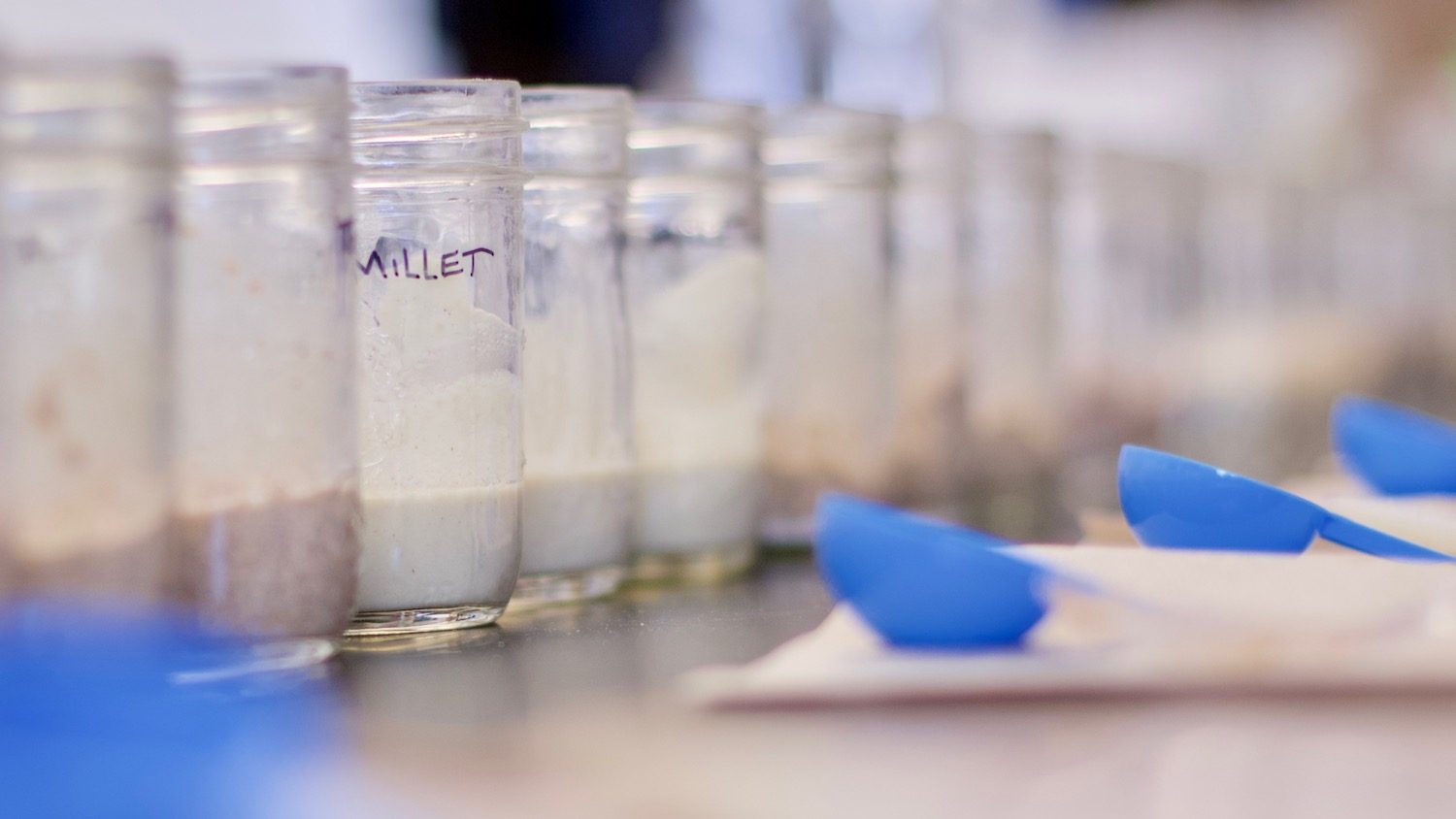
Why do some starters rise to the challenge while others fall flat? This question–and how best to answer it–troubled Dr. Erin McKenney during her postdoctoral research. Every flour is a unique species of grain with differing amounts of yeast, differing amounts of gluten, and environment-specific microbial communities. With so many variables, why some starters rise while others falter is a question as complicated as the makeup of the flours.
Lauren Nichols, Dunn Lab Manager and Research Technician, offered an elegant solution to answer if and how a grain’s gluten makeup contributes to the rise of starters. All Dr. Erin McKenney and visiting BIT-SURE undergraduate researcher Sam Alvarado needed were 30 mason jars, water, baker’s yeast, 10 flours, and 8 hours:
This preliminary experiment shows how gluten presence impacts how high a starter will rise, regardless of the grain’s yeast content. Dive deeper into this experiment and Dr. McKenney’s work by watching the supplemental:
Dr. McKenney is part of the sourdough for science team with Applied Ecology Prof. Rob Dunn. This citizen science project asks home bakers from across the country to send in samples from their sourdough starters for the team to analyze. An entire ecosystem lies within these starters with warring microbial communities doing battle for resources (i.e. sugars and water) to multiply. By analyzing sourdough starters made in different houses, the sourdough for science team is able study fundamental ecology of microbial succession–and bake some great breads.